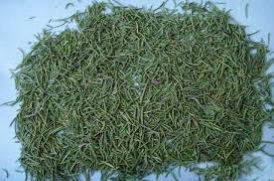
Rosemary extracts are prepared through the extraction process from dried rosemary leaves. This can be done using ethanol, acetone, and/or hexane and supercritical carbon dioxide. Out of the 5 methods, extracting the rosemary through supercritical carbon dioxide is most common. In this process, dried rosemary leaves are dissolved in carbon dioxide, then the carbon dioxide fraction obtained is precipitated. The next step would to be to deodorize the raw extract by supercritical carbon dioxide to obtain concentrated amounts of the essential oil which includes carnosol and carnosic acid. Finally, to convert the extract into powder or liquid-oil form, the substance has to be homogenized and mixed with food-grade carriers. The carnosol and carnosic acid levels are approximately 30%.
This procedure results in superior quality natural oil that contains the most properties of rosemary than the other methods. After extracting, less than 4% of sunflower seed oil is added to increase the solubility when the substance is mixed with oils or fats. Then, a tiny amount of GMO-free tocopherols are added to enhance the properties of anti-oxidants of the oil.
This procedure results in superior quality natural oil that contains the most properties of rosemary than the other methods. After extracting, less than 4% of sunflower seed oil is added to increase the solubility when the substance is mixed with oils or fats. Then, a tiny amount of GMO-free tocopherols are added to enhance the properties of anti-oxidants of the oil.
 RSS Feed
RSS Feed